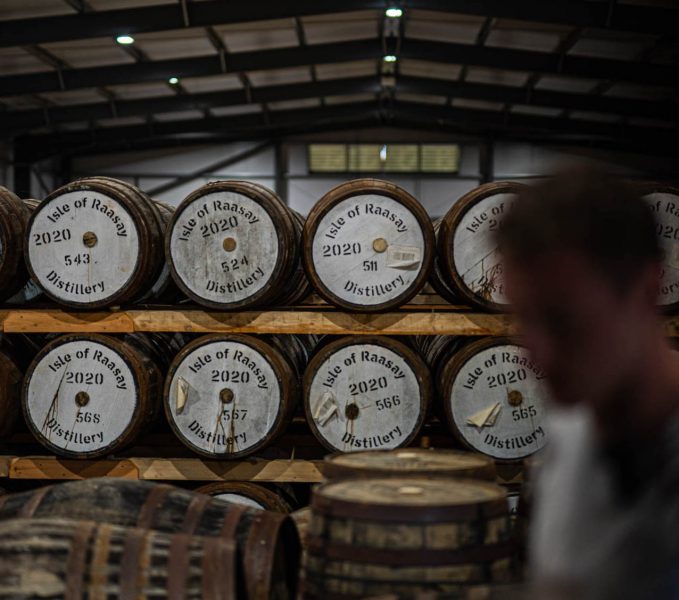Isle of Raasay
The Isle of Raasay [RAAH•see] Distillery began with a blank sheet of paper and a goal to become Scotland’s leading artisanal distiller. A tiny island with a population of only 161, Raasay is located in the Hebrides [heh·bruh·deez] archipelago between the Isle of Skye and mainland Scotland. Co-founders Bill Dobbie and Alasdair Day identified Raasay as an optimal location for whisky production and received permission to revitalize the island’s nineteenth century Borodale House, establishing Isle of Raasay Distillery as the island’s first legal distillery in 2017.
While archaeological evidence suggests illicit distillation occurred on Raasay as recently as 1850, Isle of Raasay Distillery’s state-of-the-art production facility balances traditional whisky-making methods with progressive innovation to encapsulate the contemporary whisky landscape in glass. Rather than following the Scotch tradition of producing a defined style of single malt and patiently waiting for it to mature—most commonly in ex-bourbon barrels—Isle of Raasay Distillery produces six styles of single malt that are then married together in the final flagship blend. While common practice in countries such as Japan, Taiwan, and India, Isle of Raasay is the first Scottish distillery to approach production in this way.
Part of the distillery’s ethos is to distill, mature, and bottle every drop of spirit on the island to fully capture the terroir of the Hebrides. Raasay’s many lochs were formed by melting glaciers and provide the water for the distillery’s onsite well, Tobar na Ba Bàine, or Well of the Pale Cow. This water, which is used in every step of production from mashing to proofing, flows from the island’s peak, Dun Caan, and is filtered across volcanic rock and sedimentary Jurassic sandstone. The water’s enhanced minerality aids in yeast development during long, 3–5-day fermentation periods, and double distillation in Frilli copper pot stills results in spirits of astounding complexity before they even reach the barrel.
Using both peated and unpeated single malt, Isle of Raasay utilizes ex-Woodford Reserve Rye whiskey, ex-Bordeaux red wine, and new Chinkapin (also spelled Chinquapin) oak casks of varying toast and char levels to individually mature its whiskies. Once fully matured, the six whiskies are carefully blended to craft the distillery’s flagship Hebridean Single Malt. Additionally, as part of their Na Sia [neh shee-ah] series (meaning “the six” in Gaelic), Isle of Rassay Distillery offers limited single cask bottlings of each of their six whiskies that deconstruct the Hebridean blend and demonstrate the influence of each cask type on both peated and unpeated malt.
Since its establishment, the Isle of Raasay Distillery has become embedded in the island’s tight-knit community through close work with local businesses and the creation of new job opportunities. With a focus on local production, provenance, quality, and innovation, Isle of Raasay Distillery is an exciting new addition to a long history of Scotch whisky tradition. To quote whisky writer Dave Broom, “[Isle of Raasay Distillery] is not just making alcohol, they are making spirit.”




